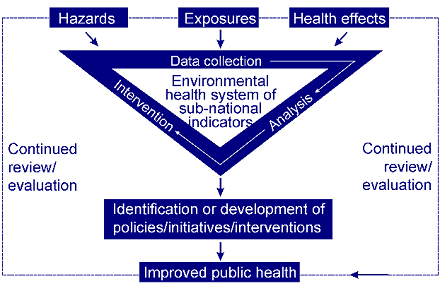The foundations for a public health map for Europe, with a focus on environmental factors, have been laid, as part of an innovative HPA led project.
 |
| [relatedPosts title=”Related Posts”] |
|
|
The UNIPHE (Use of sub-National Indicators to Improve Public Health in Europe), project kicked off three years ago and involved public health professionals compiling key information from European countries so they could draw worthwhile public health comparisons on a regional basis.
So far scientists have compared, among other things, deaths and injuries caused by road traffic incidents and health effects of environmental factors such as noise and air quality. The investigation team has now finished its three year long project and is finalising a report which will be published later this year.
Dr Lorraine Stewart of the HPA, and UNIPHE project co-coordinator, said: “All the available data we have collated so far has been used to create a new database covering all the partner countries.
“This has not been available in one place before and having it in this format makes it easier for those of us in public health to make comparisons at the regional and national level.
”This information, which is accessible to all partner nations, has also helped to highlight the differences and similarities those of us in public health work face because we know that although public health measures may be seen to succeed nationally, their success at the regional level can vary hugely.
“So when it comes to being able to evaluate the effectiveness of public health policies in regions comparable to your own, this is an invaluable tool to have at your disposal.”
The work was led by staff from the UK’s Health Protection Agency and involved teams from Spain, Germany, Lithuania, Romania, Slovenia, and Hungary.
One of the biggest differences observed so far, at the European level, has been in the rate of accidental deaths of children from falls, drowning, fires and poisoning – with some countries reporting death rates 15 times higher than others. In addition the project has drawn together data from individual countries in one place which has meant that for the first time the team has been able to identify differences within nations taking part.
Dr Stewart added: “The work so far highlights areas which require more work. They are complex and cut across many areas and government departments, so require serious consideration and well thought through policies which can be put together learning from each others’ experience.
“The information system we have developed is a tool which could help shape future work, and although the UNIPHE project is now coming to an end, it is hoped that this work will be the first stage of long term efforts to create a public health map that covers all of Europe.
“And that is something which, in the long term, could make a lasting impression on efforts to improve all of our public health.”
Further Information
- For more information on UNIPHE visit http://www.uniphe.eu/
- For the purposes of UNIPHE a ‘region’ is classified as the highest tier of sub-national division used by central Government. In England this could be the West Midlands, the South West or North East.
- The team behind the study looked at the period of 1999-2008 when calculating its comparisons.
.





